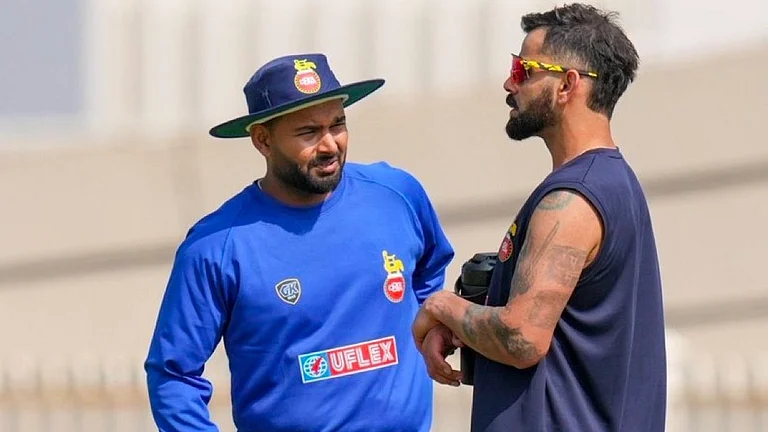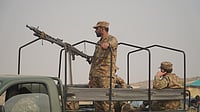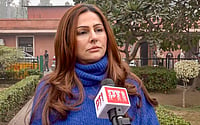IN the eve of the 300th year of the Khalsa, the reassertion of the Sikh identity has brought hardliners out of the closet. Fundamentalist ideologies are being articulated in a rash of recent publications, in academic conclaves and on the Internet. To all appearances, say observers, the searing memories of terrorism have faded under the moderate regime of Punjab chief minister Prakash Singh Badal, but a section of the intelligentsia has pulled the Amritsar Declaration from the archives and is dusting it off.
"Fundamentalist violence (militancy) has disappeared but fundamentalist ideology is well-entrenched in our universities, where it is going unchecked," observes Jasbir Singh Ahluwalia, director of the Guru Gobind Singh Foundation and a key player in Badal's face-off with the Akal Takht in 1994.
In this context, the Damdami Taksal's elegantly produced Khalsa Aetihasik Diary, 1998 has created a stir. It seeks to establish a continuity between the Sikh martyrs of Mughal times, the freedom fighters and the alleged "terrorists" shot down during insurgency. Banda Bahadur dominates the front cover and Jarnail Singh Bhindranwale the back, with the caption: "When all channels are closed, the sword is picked up." The diary—since disowned by the Damdami Taksal chief but still being distributed—eulogises the assassins of Indira Gandhi, Beant Singh and A.S. Vaidya. A case in point is the illustration of the former PM being shot with the caption: "Indira, the Akal Takht is that of the Akal (God), but you attacked it without a trace of fear. Brave Satwant Singh and Beant Singh riddled you with bullets."
No less jingoistic is the magazine Shahadat International. The back cover boasts a handsome photograph of alleged militant Bhai Dilawar Singh Bittoo, who is still in jail under TADA. The accompanying poem, apparently inspired by Walt Whitman's To the old cause, is replete with Bittoo's determination to fight for 'freedom'. The magazine dedicates itself to expressing the pain of the Sikh qaum. Another journal, Panj Dariya, describes itself as a platform for the defeated generals of the Khalistan movement.
Somewhat more powerful—because interactive—is the 'Burning Punjab' website. It puts out news relevant to Sikh communities worldwide, like the hukumnamas (orders) issued by the Akal Takht or protests by NRI Sikhs against the nuclear bomb, carries articles on the separatist ideology and airs the views of hardliners. An e-mail from a Pakistani expresses solidarity with the "Sikh struggle", another from Canada lam-basts Balwant Singh Ramoowalia while a third attacks multimillionaire NRI Didar Singh Bains. President of the World Sikh Organisation which endorsed separatism, he has now adopted the moderate line espoused by his good friend Badal, thus ditching the "cause", complains the author.
An example of the website's staple fare is the hard-hitting article "Home for Little Terrorists", an account of the orphans of militants gunned down by the Punjab police, who've found a home thanks to the "Guru Aasara trust" and Bibi Kulbir Kaur. She is the wife of Anwar Singh Dhami, who charged K.P.S. Gill with staging mock surrenders (including his own) of terrorists to gain brownie points with the Centre.
Ahluwalia finds fundamentalism being articulated in the most unlikely fora—like the 31-member SGPC subcommittee set up to oversee the tricentenary celebrations, or college seminars. "The very people who drafted the Amritsar Declaration (which in '94 reiterated the demand for a Sikh homeland) are openly espousing it now," he says. The Sikh scholar fears a section of the intelligentsia, which took on the religious orthodoxy in 1994, is now giving it a boost.
Certainly, the Sikh clergy is rather more active. Akal Takht jathedar Bhai Ranjit Singh has issued a record number of hukumnamas with the aim of purifying the Sikh faith. On April 20, he ordered gurdwaras all over the world to maintain "sangat de pangat di maryada", the custom of sitting in lines on the floor while partaking of langar. He castigated gurdwaras for not themselves cooking the food served as langar, creating consternation among sangats abroad.
Over the last three months, 'Guru Panth da das' Bhai Ranjit Singh has issued a series of hukumnamas aimed at preventing disrespect to the Guru Granth Sahib. On March 16, he banned installation of the Granth Sahib in hotels and marriage halls for the purpose of anand karaj (wedding). On May 5, he declared as tankhaiya (deserving punishment) publishers who had been selling or burning spare gutkas (holy scriptures) as raddi rather than with the proper rituals. They had further insulted the granth by printing gutkas bearing photographs of persons other than the gurus.
Earlier, on April 20, the Akal Takht had ordered the social boycott of a Ludhiana-based publisher for selling gutkas as quick fixes for illness. In a separate order, it ruled that gutkas would henceforth be published only with the authorisation of the Takht and the SGPC. Perhaps inspired by all this, a group of intellectuals from the Punjabi University at Patiala have suggested a hukumnama banning the juxtaposition of Guru Nanak's name with footwear firms, as in "Nanak Boot House".
IN a quasi-political order, the Akal Takht punished Bibi Amarjit Kaur, who allegedly had to forgo her Rajya Sabha ticket for having once supported Operation Bluestar. A more significant political issue before the jathedar is Congressman Amarinder Singh's complaint against Akali heavyweight and SGPC chief Gurcharan Singh Tohra for having sought Nirankari votes for his nominees. The jathedar is miffed with Tohra at the moment; the SGPC had questioned his accounts, prompting him to quit its accommodation. The central issue, however, is that as far as all the three parties are concerned, the Nirankaris are "untouchable".
Tohra and the jathedar were on the same side of the fence at a meet organised by the AISSF in Jalandhar last year, when Punjab education minister Manjit Singh Calcutta called for a religious "code of conduct" in schools. He also suggested "kirtan" classes so that religion and education should not be separated. Significantly, the meet honoured Pritam Kaur, widow of Bhindranwale. Tohra presented her a memento. Another relevant element is the Singh Sajo Lehar (movement for baptism), which some find reminiscent of the late '70s and early '80s.
Among those who have "taken amrit" and been baptised is former Supreme Court Justice Kuldip Singh, now president of the World Sikh Council. He's also changed his lifestyle to conform with the faith. The jat-hedar of the Akal Takht is the council's patron, but the Damdami Taksal has extended support with a Rs 1 lakh donation. While some Sikh scholars have attacked Singh for having caved in to the orthodoxy, he claims he can accomplish more for the Sikh community "from the inside".
Dr Pramod Kumar, head of the Institute for Development and Communication, feels these trends signify an attempt at "defining boundaries in relation to other sects and religions. On the face of it, this may seem a natural response to modernisation, but it has to be seen against the unpleasant background of terrorism. " It could well result in the negation of the process of reconciliation initiated by the resurgence of democracy in Punjab, he feels. "What's particularly disturbing," he notes, "is moderate politics is supine and is in fact busily trying to placate the hardliners, just as Zail Singh tried to placate Bhindranwale."
Curiously, it is a section of emigrant Sikhs who provide external and financial stimulus to hardliners. Constantly seeking to reassert his identity through religious moorings, the NRI is vulnerable to separatist rhetoric. A high-level delegation visited Canada, the UK and the US last year to garner funds for the tricentenary celebrations and was met with tremendous enthusiasm.
Some summarily dismiss fears of resurgent Sikh separatism, saying moderate governance as represented by Badal is the need of the hour and the choice of the people, and fundamentalism remains only at the level of ideas. All very well, replies Kumar, but ideas are more powerful than AK-47s.


























